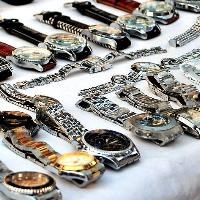(BRUSSELS) – Customs authorities detained more than 41 million fake and counterfeit products valued at over EUR 670 million at the EU’s external borders in 2016, according to figures released Thursday.
Everyday products which are potentially dangerous to health and safety such as food and drink, medicines, toys and household electrical goods – accounted for over a third of all intercepted goods.
“Fake goods pose a real threat to health and safety of EU consumers and also undermine legal businesses and state revenues,” said the Commissioner for Financial Affairs Pierre Moscovici: “Studies show that the EU is particularly exposed to imports of counterfeit products.”
Mr Moscovici said cooperation between law enforcement authorities needed to be strengthened and “risk management systems upgraded” to protect the EU from goods infringing on intellectual property rights. “A high level of protection of intellectual property is crucial to support growth and create jobs,” he said.
Cigarettes were the top category (24%) for articles detained and toys the second largest group (17%), followed by foodstuffs (13%) and packaging material (12%). The number of intercepted articles rose by 2% compared to 2015.
China remains the clear leader when it comes to the provenance of fake goods: 80% of articles arrived from China in 2016. Large amounts of cigarettes originated in Vietnam and Pakistan, while Singapore was the top source for counterfeit alcoholic beverages.
Iran was the main source country for fake clothing accessories. Hong Kong was the leader for counterfeit mobile phones and India topped the list for counterfeit medicines. In more than 90% of detentions, goods were either destroyed or a court case was initiated to determine an infringement or as part of criminal procedures.
The Commission’s report on customs actions to enforce IPR has been issued annually since 2000 and is based on data transmitted by Member States’ customs administrations to the Commission.
The data provide valuable information which supports the analysis of intellectual property rights infringements and helps other institutions such as the European Union Intellectual Property Office and the OECD to map economic data and the most common routes for counterfeiters.
Report on EU customs enforcement of intellectual property rights – results of the EU border 2016


